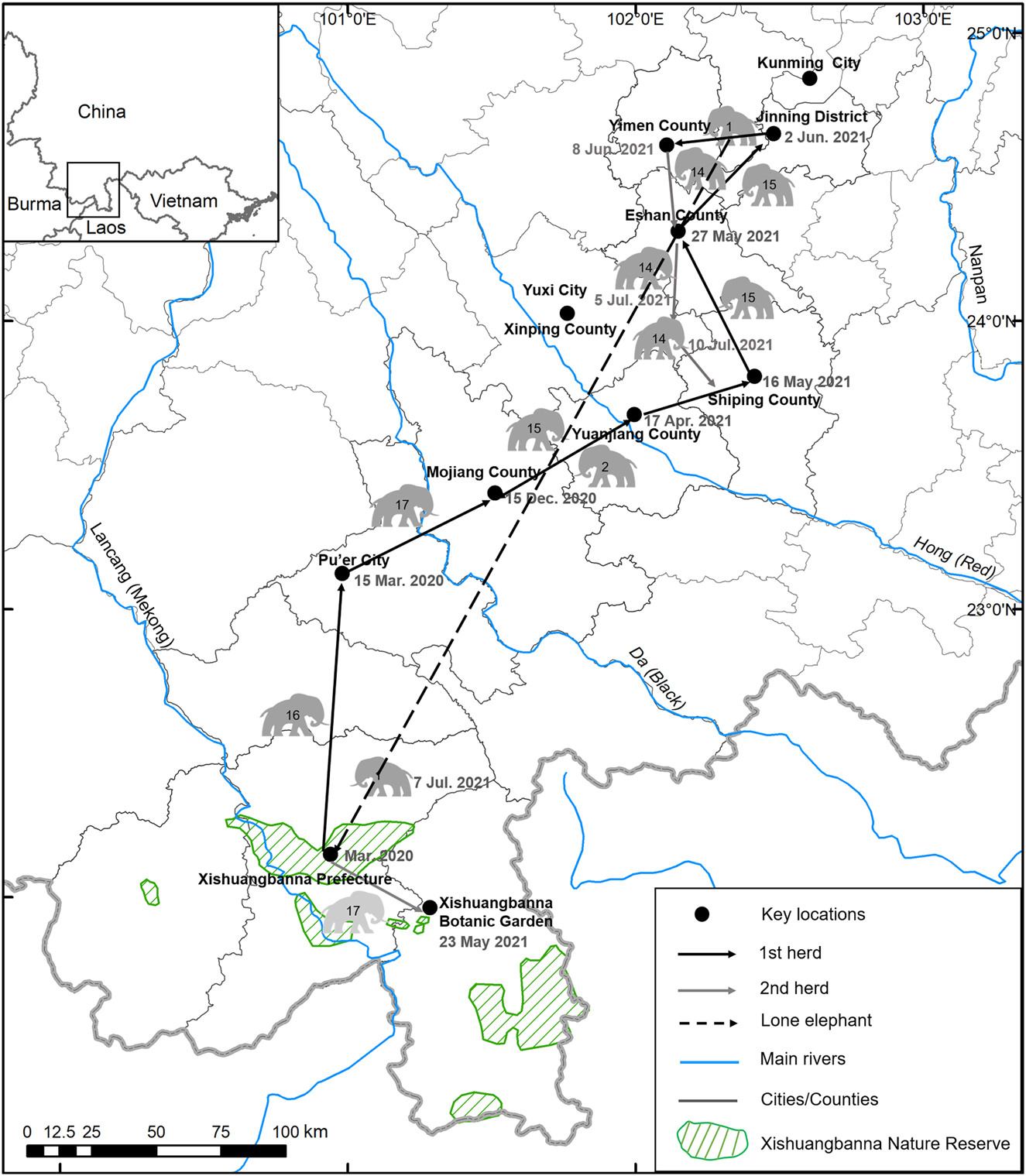In early 2020, 16 wild Asian elephants Elephas maximus, an iconic species of the tropical forest of South-east Asia and a First Category Key Protected Wild Animal Species in China, left the tropical forests of Xishuangbanna National Nature Reserve in Yunnan Province, on the China–Laos–Myanmar border, and headed northwards through a heavily modified anthropogenic landscape (see map below). The herd reached Pu'er City by March 2020, and Mojiang County by December 2020, where a calf was born. On 17 April 2021, the now 17 elephants reached Yuanjiang County, from where two of them returned to Mojiang County. In late April, these two elephants were still wandering in the Ning'er County of Pu'er City. By 27 May the herd of 15 elephants had reached Eshan County, only 120 km from Kunming City.
By the mid 20th century the Asian elephant had been almost extirpated in China as large areas of tropical forest were logged. Most of the remaining elephants lived in the 24,000 km2 Xishuangbanna Reserve, established in 1986. In the early 1990s, these elephants, which had grown to a population of c. 300, expanded their range northwards to Pu'er City, with some elephants settling in this hilly landscape interspersed with farmlands, tea gardens and secondary forests. Elephants from the Reserve are now apparently heading even further north, causing considerable disturbance as they journey. The wildlife management authority is monitoring the elephants with drones, where necessary warning local residents of the impending arrival of the herd. The herd has now moved a total of c. 500 km and is still on the move, reaching Jining District of Kunming City on 1 June.
Meanwhile, another herd, of 17 elephants, left the Mengyang area of Xishuanbanna Reserve and approached the Xishuanbanna Botanic Garden of the Chinese Academy of Sciences on 23 May 2021, where elephants were extirpated 70 years ago. These elephants are foraging in the part of the Garden used for ex situ conservation of rare crops. Part of the Garden has been closed and staff are monitoring the elephants with drones.
These two herds of Asian elephants pose a new challenge for conservation in China. In addition to investigating why elephants are leaving Xishuangbanna National Nature Reserve and to considering a new action plan for Asian elephant conservation in the country, we need to ensure the safety of people in the areas through which the elephants pass, and that of these roaming elephants.

The movement paths of wild Asian elephants Elephas maximus from the Xishuangbanna National Nature Reserve to Kunming City and to Xishuanbanna Botanic Garden, Yunnan, China.


